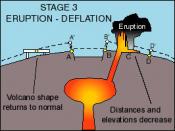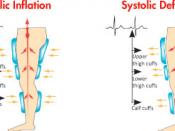DEFINING INFLATION AND DEFLATION
Webster's says, "Inflation is an increase in the volume of money and credit relative to available goods," and "Deflation is a contraction in the volume of money and credit relative to available goods." To understand inflation and deflation, we have to understand the terms money and credit.
DEFINING MONEY AND CREDIT
Money is a socially accepted medium of exchange, value storage and final payment. A specified amount of that medium also serves as a unit of account.
According to its two financial definitions, credit may be summarized as a right to access money. Credit can be held by the owner of the money, in the form of a warehouse receipt for a money deposit, which today is a checking account at a bank. Credit can also be transferred by the owner or by the owner's custodial institution to a borrower in exchange for a fee or fees - called interest - as specified in a repayment contract called a bond, note, bill or just plain IOU, which is debt.
In today's economy, most credit is lent, so people often use the terms "credit" and "debt" interchangeably, as money lent by one entity is simultaneously money borrowed by another.
PRICE EFFECTS OF INFLATION AND DEFLATION
When the volume of money and credit rises relative to the volume of goods available, the relative value of each unit of money falls, making prices for goods generally rise. When the volume of money and credit falls relative to the volume of goods available, the relative value of each unit of money rises, making prices of goods generally fall. Though many people find it difficult to do, the proper way to conceive of these changes is that the value of units of money are rising and falling, not the values of...


